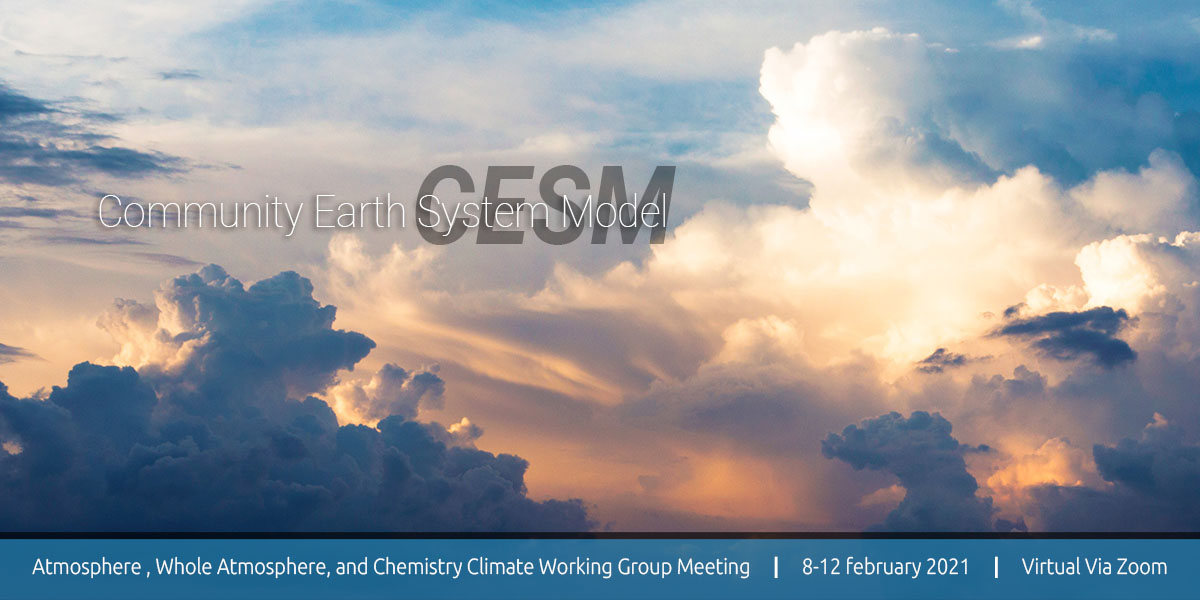2021 CESM Atmosphere Model, Whole Atmosphere, & Chemistry Climate Working Group Meeting

The Atmosphere, Whole Atmosphere, and Chemistry-Climate working groups will meet the week of February 8th. We plan to have sessions for at most 3-4 hours per day separated into a morning and afternoon session, with no parallel sessions. The detailed schedule will be determined after reviewing the submitted presentation titles. We may have a poster session if we receive more requests for presentations than fit in the sessions.
We welcome presentations on science using CAM, WACCM and CAM-chem, as well as development activities. Research using variable resolution grids is very welcome.
* Meeting agenda, participant list, and presentations will be posted here at a later date.
Meeting Agenda
View the agenda in PDF format here
Meeting Contact
For questions agout the meeting, contact Elizabeth Faircloth [ fair@ucar.edu ]
Meeting Presentations
Monday 8 February 2021 - Overview and Vertical Resolution
| Presentation Title | Presenter |
|---|---|
| CAM Overview | Julio Bacmeister |
| WACCM overview | Nick Davis and Nick Pedatella |
| CAM-chem and MUSICA overview | Louisa Emmons |
| Future Infrastructure for CAM: The System for Integrated Modeling of the Atmosphere (SIMA) | Andrew Gettelman |
| Toward the vertical resolution for the next generation of CESM | Isla Simpson |